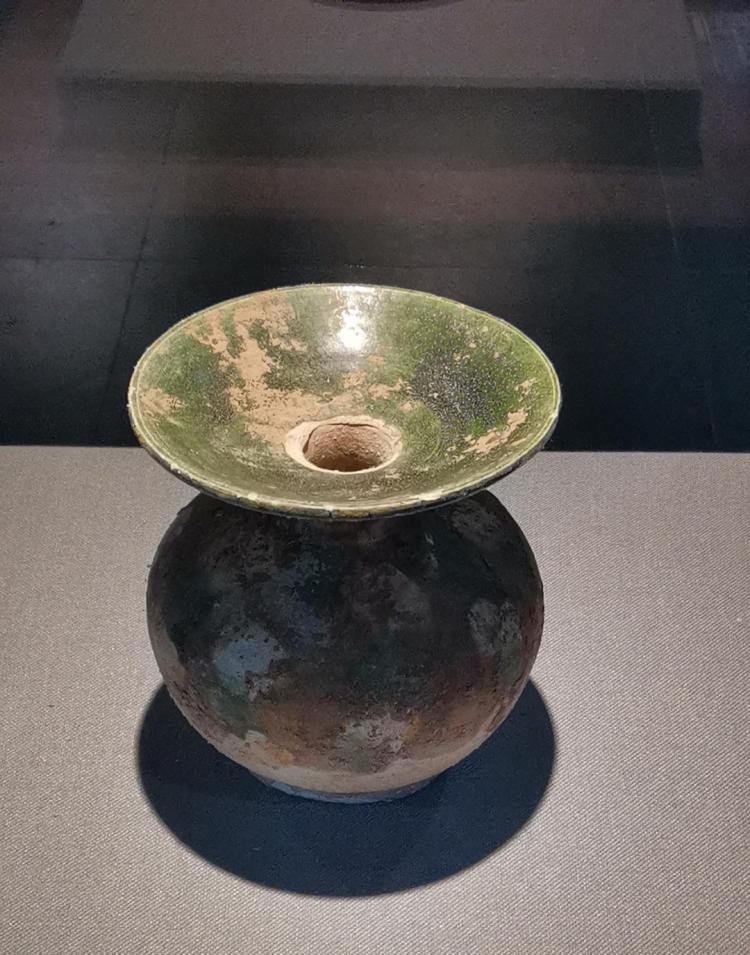The official WeChat --- of Fengxian Museum releases information in an authoritative, comprehensive and timely manner, strengthens cultural self-confidence, and records the development process.
"Closed museum does not close the exhibition, online to see cultural relics"
Do you want to learn about the life of the ancients?
The Tricolor could be a good way to go!
It's like a three-dimensional painting.
Intuitive, graphic and vivid
It reflects the picture of the life of the ancients.
Let's enjoy it together
Fengxian Museum collection of three colored utensils!
Knowledge lessons
Tang Sancai, full name Tang Dynasty Sancai glazed pottery, is a kind of low-temperature glaze pottery, glaze color has blue, black, white, yellow, green, brown, etc., of which yellow, green, brown three kinds of glaze color for the basic glaze color, so people habitually call it Sancai. The so-called three colors, not every artifact has a three-color glaze. Among the three color utensils, some are only one of the above several colors, people call it single color or one color, two colors, people call it two colors, and those with more than two colors are called three colors.
01
Tang Sancai glazed porcelain cup

The three-color glazed porcelain cup is a second-class cultural relics collected by the Fengxian Museum, dated to the Tang Dynasty, and collected by Fengzhou Village in 2005. This vessel is 14.5 cm high, caliber 13.7 cm, foot diameter 8 cm, the overall shape of the handicap is skimmed, the lip edge is short, the neck is bundled, the flat round abdomen, the false circle foot, the flat bottom, the white tire porcelain, the upper plate is applied with blue-green glaze, the enamel is lustrous, the abdomen is half glazed, the glaze is composed of white and green yellow patches, the glaze surface is thinner, the local deglaze is deglazed, the enamel shape of this vessel is rare, although it is three-colored, but it is a porcelain tire, which provides valuable physical information for understanding the history of the development of Pottery in the Tang Dynasty, and has important research value.
"Sancai" has a long history, its production history can be traced back to the Southern and Northern Dynasties period, flourishing in the Tang Dynasty, so it is called "Tang Sancai", and then there are Song Sancai, Liao Sancai, to the Ming and Qing Dynasties is to create a variety of three color instruments, such as yellow land three colors, green land three colors, purple land three colors, etc., different periods of three color ware to show the development and progress of Chinese civilization.
From the 7th century to the 10th century, the Tang Dynasty, the political situation was stable, the economy was prosperous, and the strength of the country promoted the development of all aspects, but this development also led to the luxury and luxury of the upper life atmosphere. The pursuit of luxury is not only reflected in the life before death, but also reflected in the top-down thick burial customs, from the members of the nobility to the ordinary people are popular with the custom of burial with three colored utensils.
Tang tombs in a large number of sancai ware excavation let people think that the sancai ware is a kind of underworld, thus ignoring the concept of daily necessities, after archaeological research found that before the Tang Dynasty, the sancai ware was mainly used as a daily life utensils, and the difference with the funerary products is that its tires are made of porcelain clay, porcelain is obvious, the color is fired for the second time, it is not easy to fall off. The three-color glazed porcelain cup in the Collection of Fengxian Museum is more in line with the characteristics of living utensils from the shape to the porcelain carcass, so it is speculated that it may be a dual-purpose vessel produced by the Yaozhou kiln, which can be used for funerals and can be used for daily life, and the following painted pottery kneeling figurine is a typical funerary vessel.
02
Ming painted pottery kneels to worship the figurines
Painted pottery kneeling figurines for the Fengxian Museum collection of three-level cultural relics, dating from the Ming Dynasty, this vessel length of 12.5 cm, width of 7 cm, carcass for clay pottery, the overall shape of a woman with her hands prostrated into a kneeling posture, female figurine comb fan-shaped high bun, hanging sideburns, facial features for a middle-aged woman image, facial front chest yellow glaze, white glaze below the chest, back and arms with green glaze, the rest of the exposed red carcass, enamel is thinner, there is open and deglaze phenomenon, the bottom of the figurine hollow, shaping techniques are more casual.
The figure figurine is a model product in the three colored utensils, the ancient people fantasized about continuing to enjoy the luxurious life before death, so they made everything they had before they were born into a three-colored instrument and brought it into the tomb, and the people with identity in their tombs were buried with the maid figurines, which can be seen in the tombs of the past.
Editor: Zhang Xinxin Review: Zhao Baohong